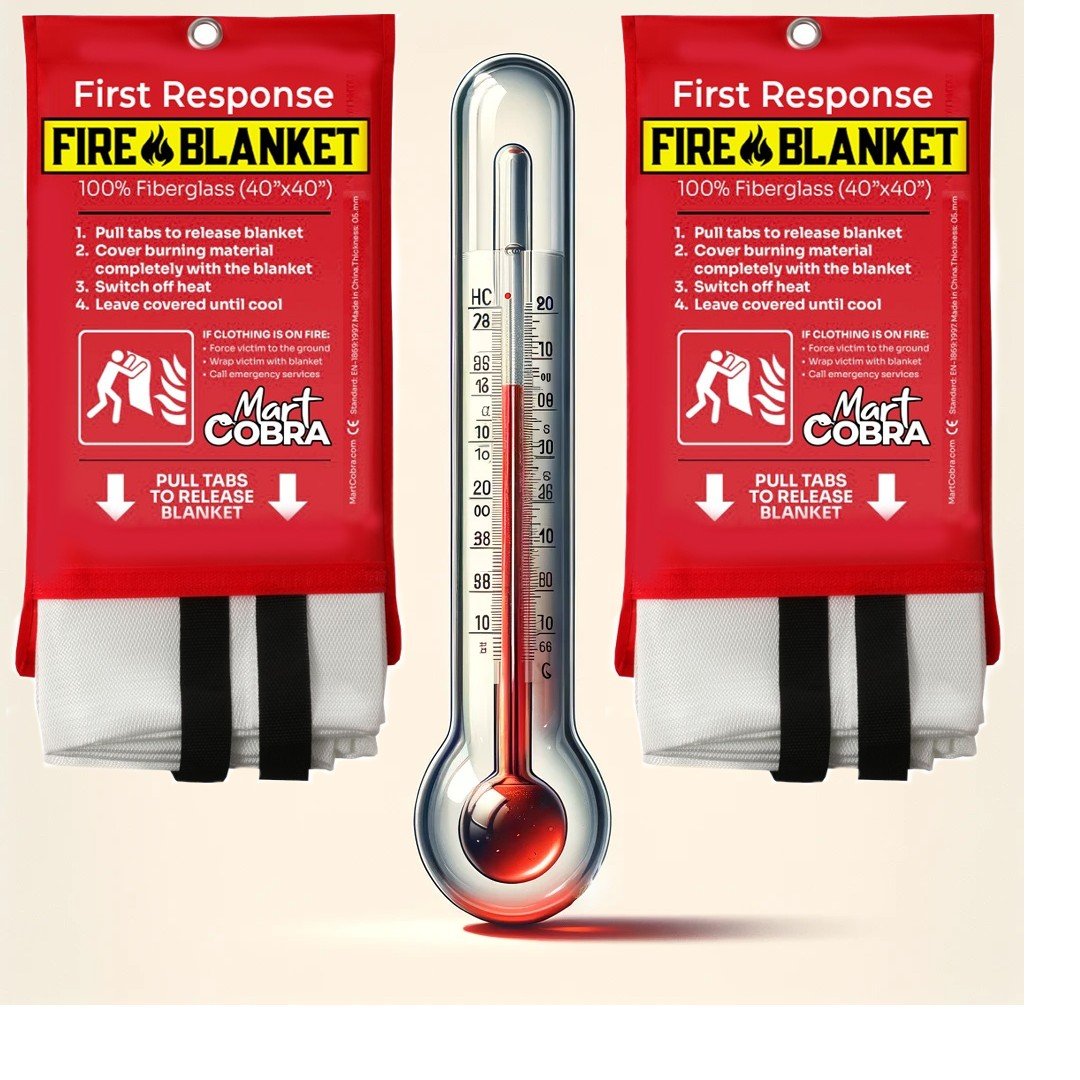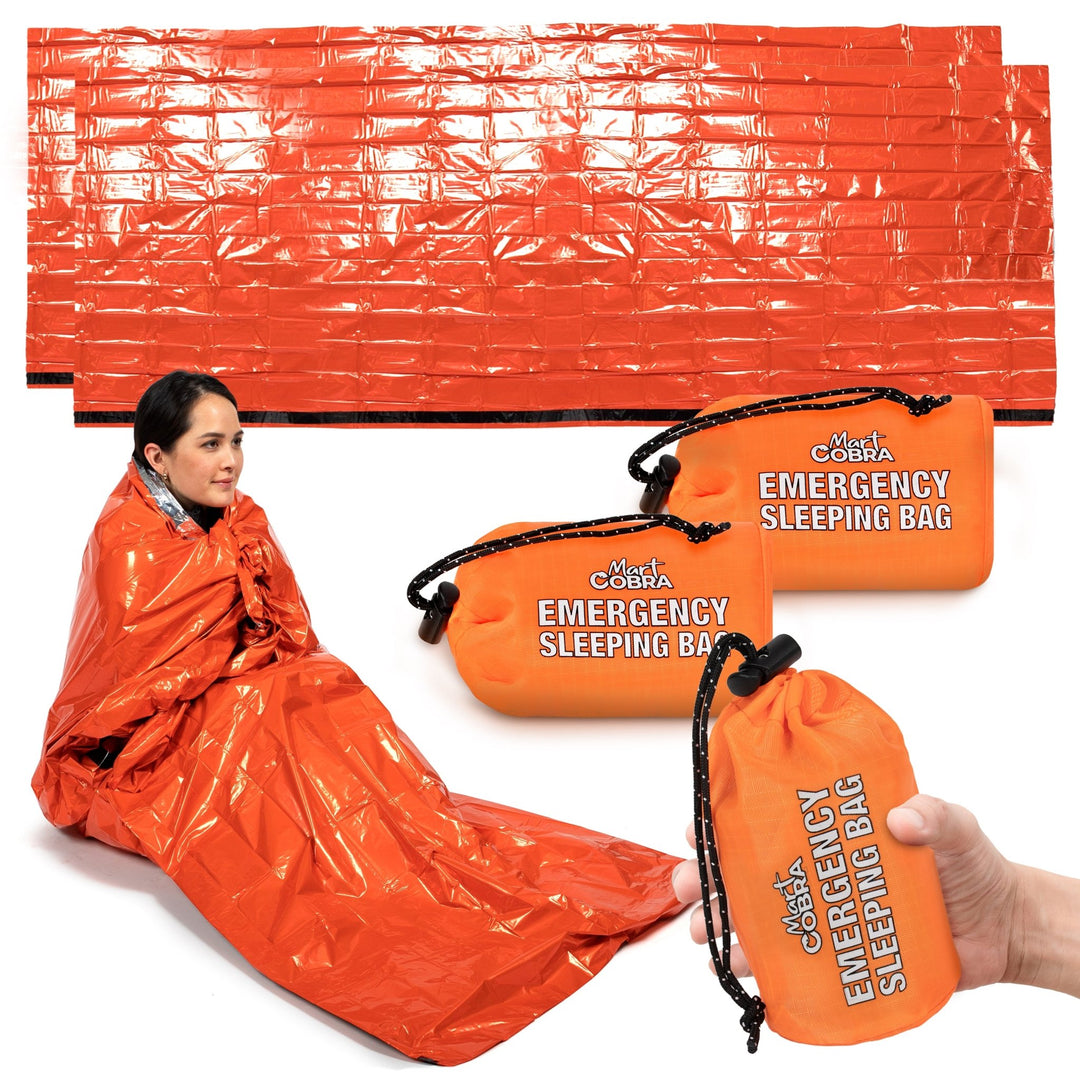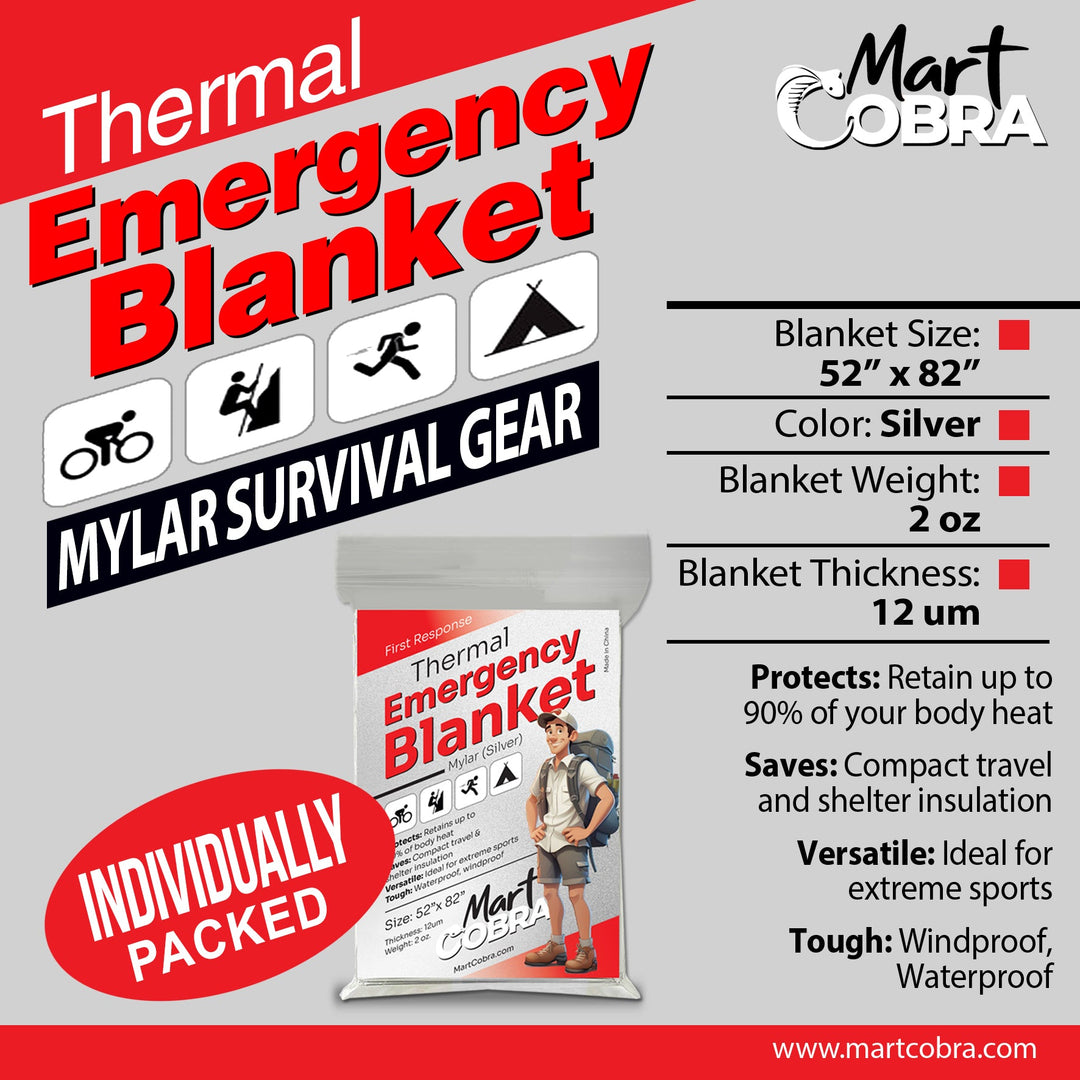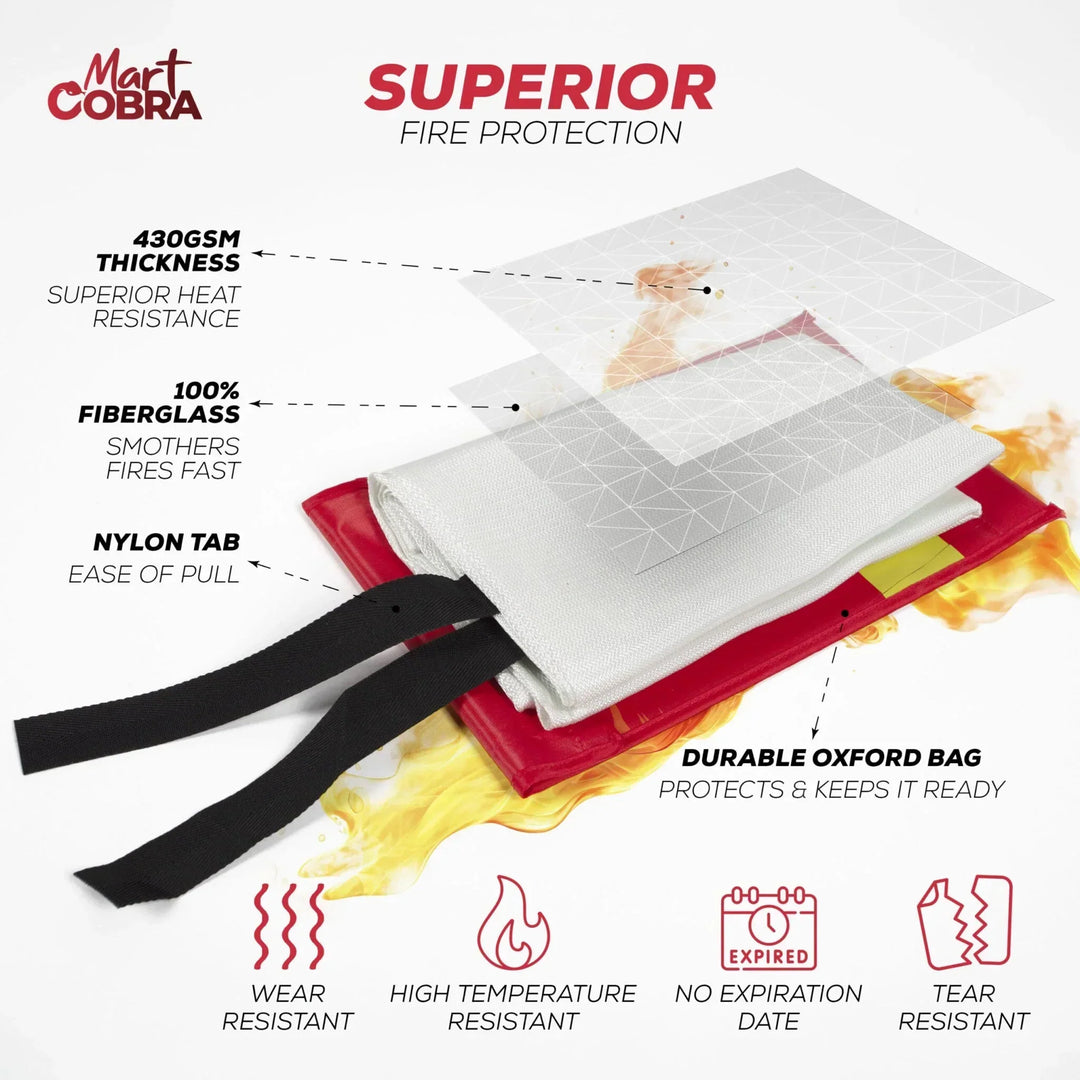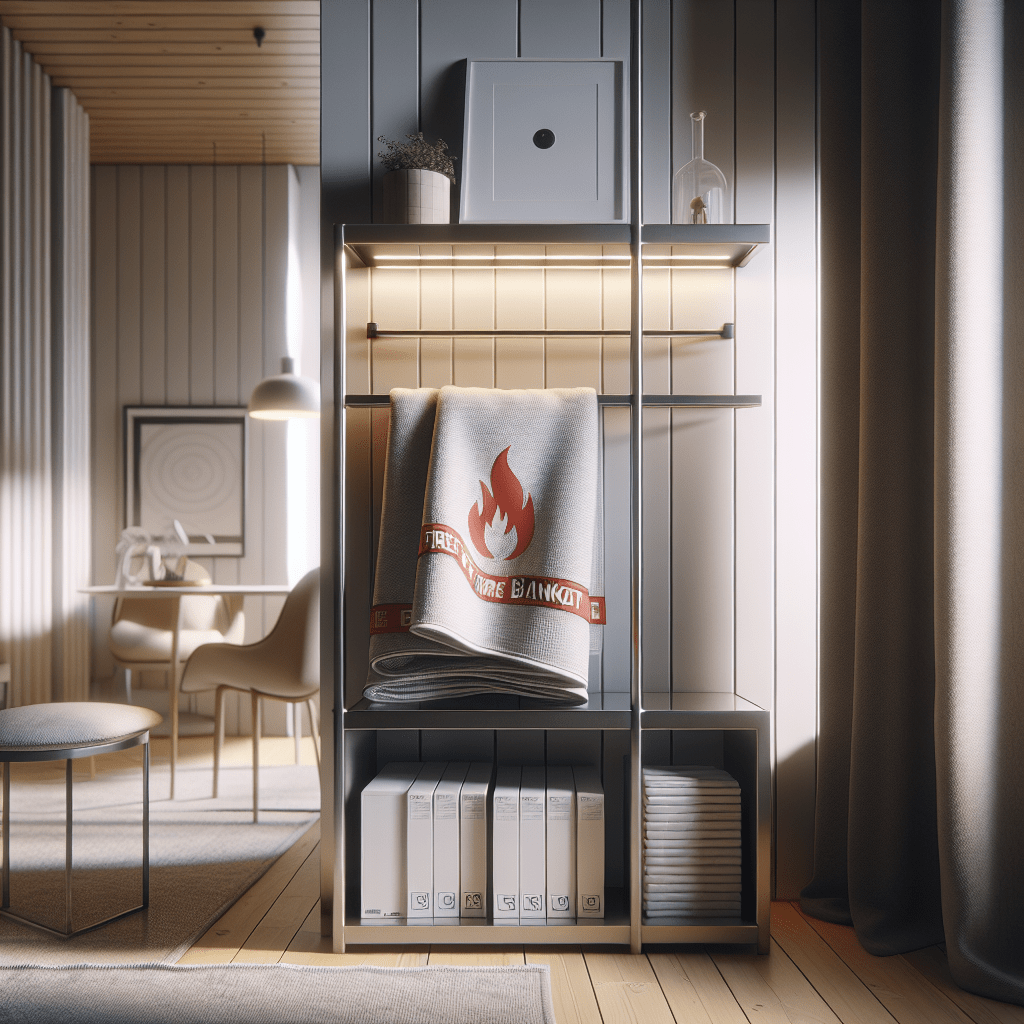Essential Features of Fire Blankets
When selecting a fire blanket, understanding its features, particularly the temperature rating, is crucial for ensuring it can effectively contain fires without causing additional risks.
Temperature Rating
Temperature rating is a fundamental characteristic that determines the effectiveness of a fire blanket. The rating indicates the maximum heat that the fire retardant blanket can withstand before its integrity is compromised. Fire blankets are commonly made fromfire-retardant materials likefiberglass orKevlar, and these materials are chosen for their ability to resist high temperatures.
- Woven Fiberglass Fabric: A typical fire blanket made from woven fiberglass fabric can usually withstand temperatures up to1200°C, providing a strong barrier against heat and flames.
- Kevlar: Some high-end fire blankets might includeKevlar in their makeup, featuring enhanced strength and an even higher temperature threshold.
It's essential you choose a fire blanket with atemperature rating that meets or exceeds the conditions it might be exposed to. Additionally, quality fire blankets are ofteneco-friendly andnon-toxic, ensuring that safety is maintained without harming the environment or human health.
Application and Usage
Fire blankets are critical tools for fire suppression, designed to extinguish small fires or provide protection from flames. Understanding how to use a fire blanket is paramount in different scenarios, ranging from kitchen mishaps to industrial incidents, and even during outdoor activities.
Kitchen Fire Protection
In your kitchen, a fire blanket can be a first line of defense against a grease fire. If a pan catches fire, do not use water; instead, smother the fire with the fire blanket to cut off the oxygen supply. Ensure to shield your hands and face while carefully covering the entire burning area.
Industrial Fire Safety
For industrial settings, fire blankets are essential for dousing fires involvingliquids and grease. High-temperature resistant blankets should be accessible for immediate use to suppress flames quickly and effectively. They also protect workers from heat and sparks during welding or cutting operations.
Camping and Outdoor Use
Whencamping, a fire blanket serves as a versatile safety tool. It can extinguish small campfires or provide a shield in case of an unexpected blaze. Ensure you have a fire blanket within easy reach to address any fire-related emergency in the great outdoors.
Electrical Fires
Electrical fires require a unique approach as water can worsen the situation. Use a fire blanket tosmother the fire on electrical appliances by cutting off the power, if possible, and then placing the blanket over the flames. This method eliminates the fire source without the risk of electrocution or spreading the fire.
Safety and Compliance Standards
When selecting a fire blanket, your safety hinges on two critical considerations: the regulations and certifications it meets, and its heat resistance and ability to act as athermal shield. These ensure the blanket performs effectively in an emergency.
Regulations and Certifications
Your fire blanket's compliance with industry standards is paramount. Look for blankets that adhere to theEN-1869:1997 standard, a European regulation that specifies requirements a fire blanket must satisfy for performance and safety. This certification gives you the confidence that the blanket is tested and capable of withstanding the rigors of fire emergencies according to set benchmarks.
